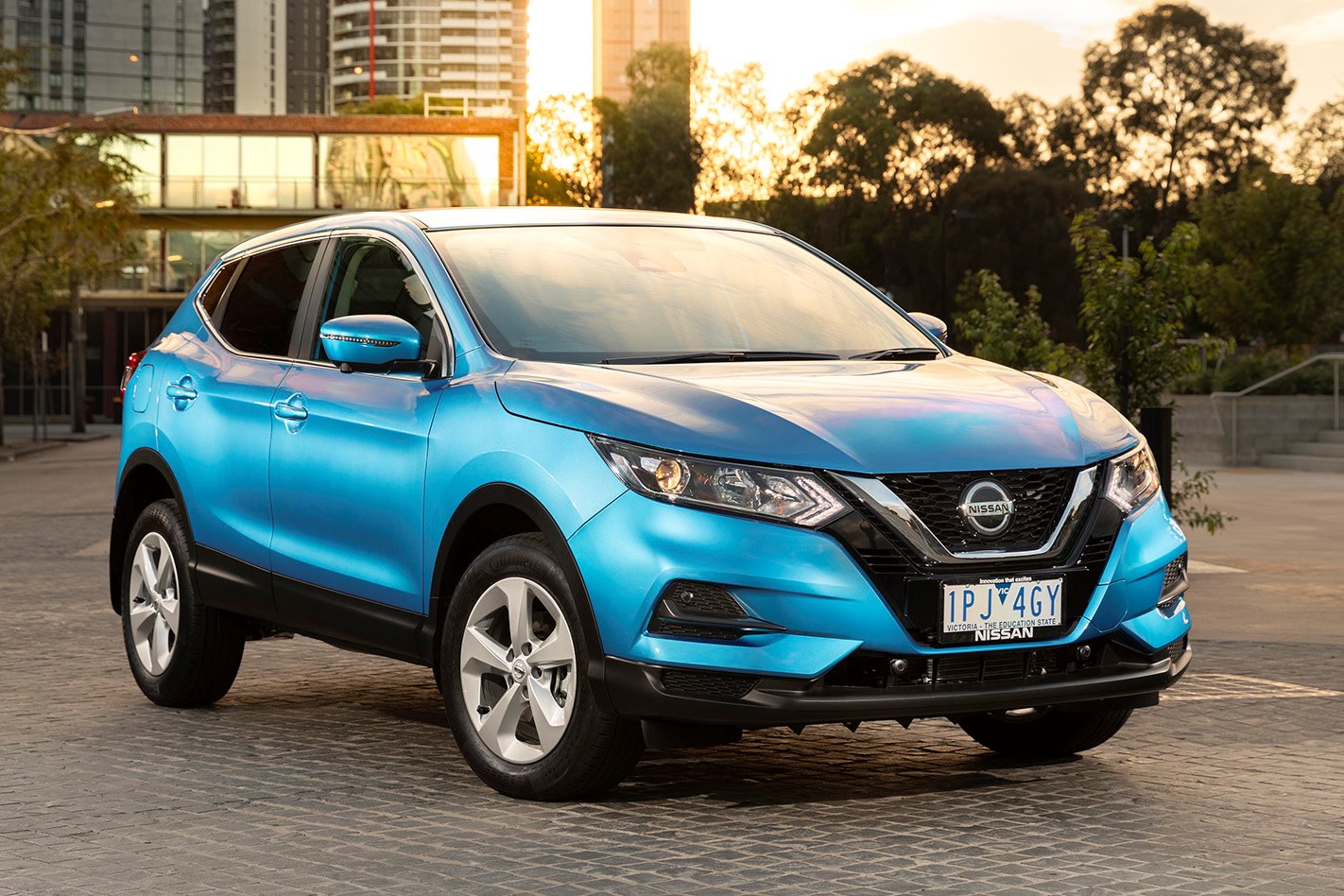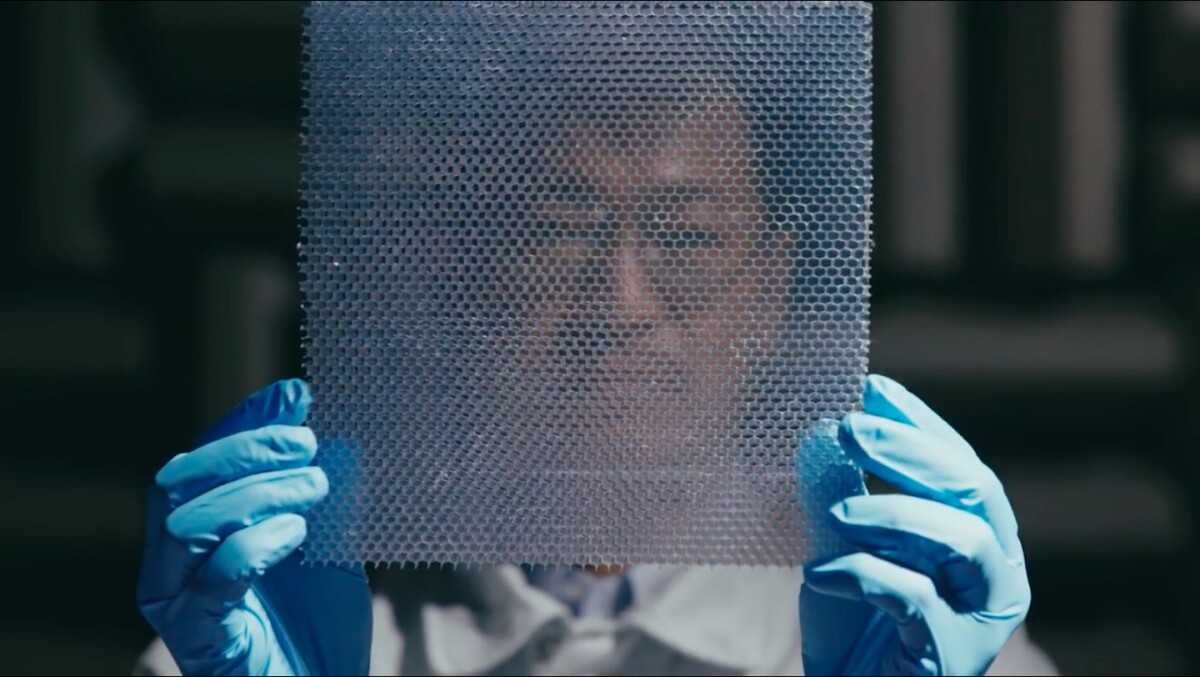
Just in case you haven’t been keeping track, the Qashqai is the latest incarnation of the SUV that Aussies used to call the Dualis.
To be fair, neither name makes much sense. Qashqai is the name of a relatively obscure Iranian mountain tribe, and Dualis was a purely made-up word by Nissan, meant to refer to the SUV’s dual-purpose abilities.
Nissan says the Qashqai was named as such to reflect that its owners would be "nomadic in nature", and, in a way, it is fitting, given the Qashqai’s dimensions put it in an SUV tribe of its own. See, it’s not quite small enough to be a small SUV, and not quite large enough to be a mid-size one.
Is it a good middle-ground, though? Can the Nissan Qashqai for sale make an obscure tribesperson out of me? I spent a week in a top-spec Ti to find out.
Does it represent good value for the price? What features does it come with?
Our Ti is the, erm, chief of the Qashqai line-up. Pricey for a small(ish) SUV, but not outrageous at the top-end.
For the cash, you get a leather interior trim, a panoramic glass sunroof, six-way power-adjustable driver’s seat, heated front seats, a 7.0-inch multimedia screen with built-in sat-nav, keyless entry and push-button start, dual-zone climate control, Nissan’s 360-degree reversing camera (which the brand calls an ‘around view monitor’), which is normally reserved for vastly more expensive European marques. You also get a standard reversing camera as well as front and rear parking sensors and an automatic anti-glare rearview mirror.
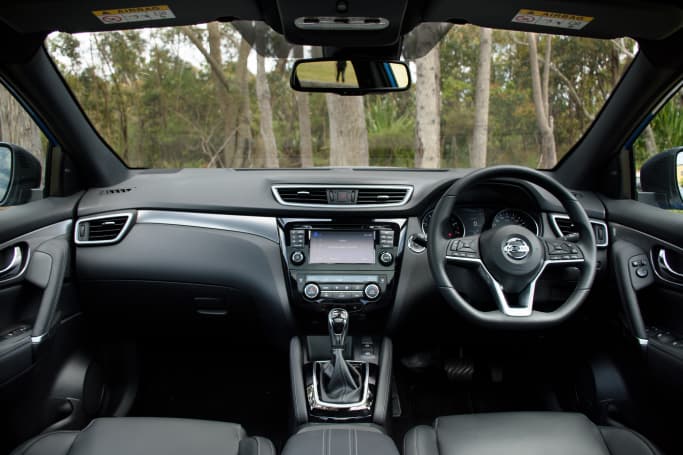
The leather seats and soft-touch points are genuinely plush and comfortable, and the panoramic glass roof adds a nice premium air to the cabin on sunny days. It is a fixed roof, however, and does not open.
There is also the welcome addition of LED headlights, fog lights and DRLs, which are automatic and come with high-beam assist as part of an ‘adaptive front lighting system’. The wing mirrors have LED indicators, and are both heated and auto-folding.

Is there anything interesting about its design? 7/10

Our top-spec Ti looked quite stunning in its Vivid Blue colour (optional, by the way), which helps because aside from some much sharper and cleaner lines around the front and side - not to mention a much more modern V-shaped grille – the Qashqai’s design really hasn’t advanced too far from its Dualis origins in the mid-2000s.
Around the back is a better angle, with the chunky taillights meeting the car’s rear-wheel haunches, and a hot hatch-like rear spoiler jutting out from the roof.
Helping set the Ti apart from the rest of the range is the gigantic 19-inch alloy wheels with a two-tone milled finish, which really fill those raised SUV arches.

Inside, things look luxurious thanks to a solid helping of leather on the doors, seats, centre console and steering wheel. It also feels a bit more spacious than some competitors, but the modern illusion is quickly broken by the old-fashioned centre stack.
It’s blatantly obvious that the multimedia screen is vulnerable to glare, using an old-style touch surface, and the design of the interface is old, slow and clumsy. And aside from some useful shortcut buttons down the sides, the gloss-plastic insert in which it lives looks a little ill-fitting considering the rest of the matte surfaces in the cabin.
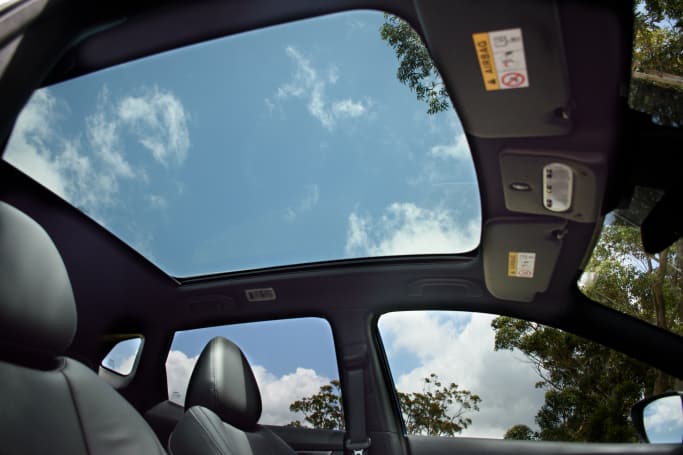
The instrument binnacle consists of a colour screen and two traditional dial clusters. While hardly moving design forward in this area, it has huge and legible fonts and presents all the important information well.
The 2018 Qashqai is separated from the previous iteration by a much more modern-looking steering wheel (in the Ti’s case, it's D-shaped with leather trim), seat design and a slightly re-worked centre console area.

How practical is the space inside?
While the interior feels all plush, light and airy, it’s not quite what it appears to be. The very first thing I noticed when stepping into the Qashqai’s helm was the super-high seating position.
Normally, this is a boon for SUV buyers, as it helps with visibility. However, the huge sunroof in the Ti lowers the roof level, making it problematically close to my head. I’m 182cm tall, and anyone even a few centimetres taller than me would be able to rest their forehead on the sun-visor.

That being said, I found the leg and arm room in the cabin to be fantastic, and there was always a nice and soft surface to rest your elbows on - which can hardly be said for something like the Hyundai Kona.
There is also a heap of handy, rugged storage spaces around the cabin, including deep, useful cupholders in the doors and transmission tunnel. There is also a rather large two-tiered storage area with USB ports, aux input and cable-management in the centre console, and a deep trench under the air conditioning controls which hosts a 12-volt power source, and so is very suitable for phones and wallets.
I found the backseat to have great leg and headroom despite the sunroof, and the seats back there are as plush as they are up the front.
Rear passengers benefit from two cupholders (but no trenches) in the doors, there's a weird little storage nook on the back of the console box and leather-bound pockets on the back of both front seats. Like many other small-SUVs, there are no vents back here. Sorry.
The lack of a coupe-style roofline like many competitors means the boot, at 430L, is one of the biggest in the class, and it comes with a couple of tricks.
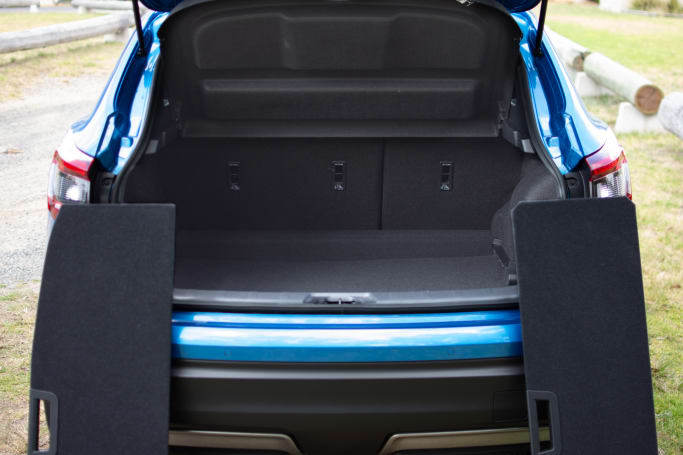
The boot floor is variable, for example, courtesy of some removable floor panels, and can provide an impressive and almost completely level 1598L with them in and the rear seats down.
What are the key stats for the engine and transmission?
Our Qashqai Ti from Group 1 Nissan has a 2.0-litre four-cylinder engine mated to a continuously variable transmission (CVT), which is now your only powertrain option.
There was once a diesel, but it’s dead now, and surprisingly there’s still a manual, but only for the base-model ST. All Qashqais are front-wheel-drive only. If it’s AWD you’re after, you’ll have to step down to the much smaller Juke or up to the larger X-Trail.
The 2.0-litre produces an average-sounding 106kW and 200Nm of torque, and considering most competitors produce similar, or worse, figures, the Qashqai is on-par.
More interesting competitors come in the form of the Hyundai Kona’s 1.6-litre 130kW/256Nm engine option, and the fun-to-drive Suzuki Vitara S-Turbo which has 103kW/220Nm.
How much fuel does it consume? 7/10
Over my week of reasonably mixed urban and freeway driving, I returned a figure of 8.2L/100km against Nissan’s combined figure of 6.9L/100km. A miss, but not by much, and I have found that roughly 8.0L/100km is what you can expect from most of its turbocharged competition.

The Qashqai happily drinks base-grade 91RON unleaded petrol and has a 65-litre tank. There's no stop-start technology to help you out with the economy, though.
What's it like to drive? 7/10
The Qashqai is hardly the last word in driving dynamics, but it is easy to helm and has decent handling for the segment.
The 2.0-litre is a tad thrashy, although doesn’t really leave you desperate for more power, and the CVT gives the accelerator pedal a lethargic, rubbery response. That being said, the steering provides a nice blend of lightness for low-speed manoeuvrability, while being solid and responsive at higher speeds.
The suspension is tuned more for comfort than sportiness, which suits the character of the car’s plush interior well, and despite a 1429kg kerb weight, it felt surprisingly light and agile in the corners for an SUV. This is helped by the Qashqai’s multilink rear suspension rather than the torsion beam which appears in many small-SUV competitors.
You do have to be overly conscious of the gigantic alloy wheels on the Ti when parking on the street, as gutter rash would look tragic, and the amount of road noise that was produced by the slim tyres was less than impressive.

Overall, the Qashqai provides a confident and comfortable drive.
What safety equipment is fitted? What safety rating? 9/10
The Ti, being the top-spec Qashqai, comes with the most comprehensive active safety suite available on this model.
That’s an impressive suite, and it as at the forefront of what is being offered elsewhere in the small SUV segment.
On the passive safety side, it has six airbags and the standard suite of braking and stability controls. A space-saver spare lives under the boot floor and the rear seats host two ISOFIX child seat mounting points.
What does it cost to own? What warranty is offered?
Nissan lets this car down with a genuinely old-fashioned three-year, 100,000km warranty. Most of its main competitors, apart from Toyota and Suzuki, have moved on with at least a five-year, unlimited-kilometre offering.
You are, however, permitted to purchase an extended warranty for up to three extra years, but the maximum number of kilometres you can add is 50,000. A total of 150,000km from new is not really sufficient cover for six years.

The Qashqai requires servicing once a year or every 10,000km and is covered by a fixed-price servicing program for the first 12 years.
Verdict
The top-spec Qashqai Ti is not cheap but helps to justify its price through its impressive safety equipment, luxurious features and - most importantly - its segment-bending dimensions.
It will suit a buyer looking for something not as big or capable as an X-Trail, but still with the ample boot space and interior dimensions to match its traditional SUV visage.
Article source: https://www.carsguide.com.au/car-reviews/nissan-qashqai-ti-72436





